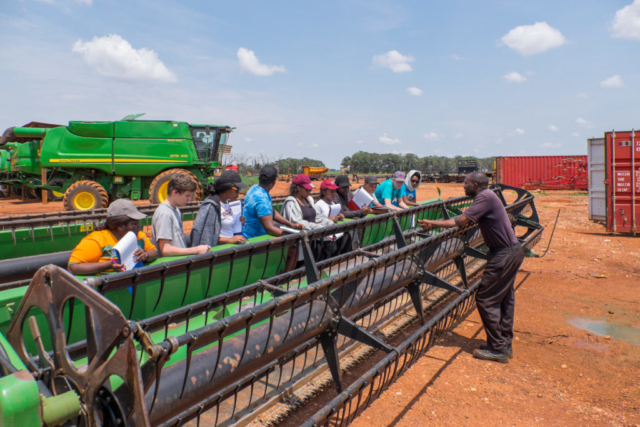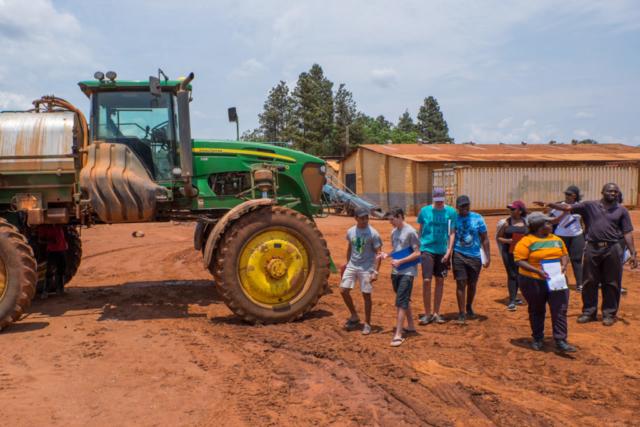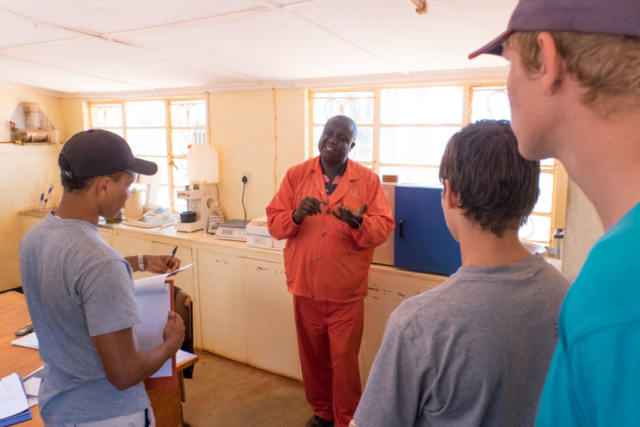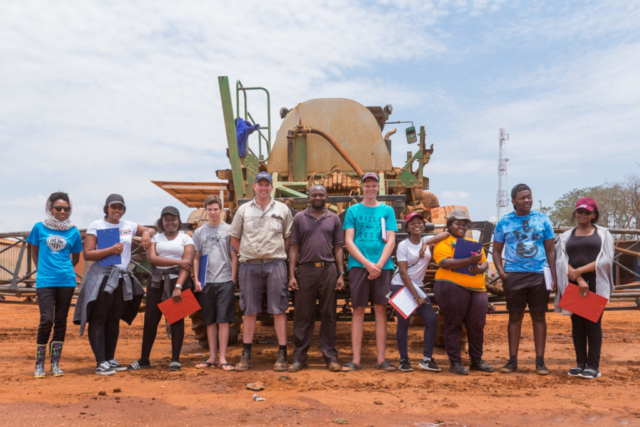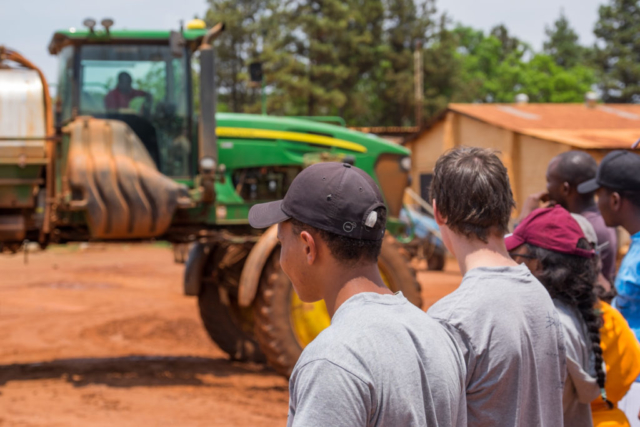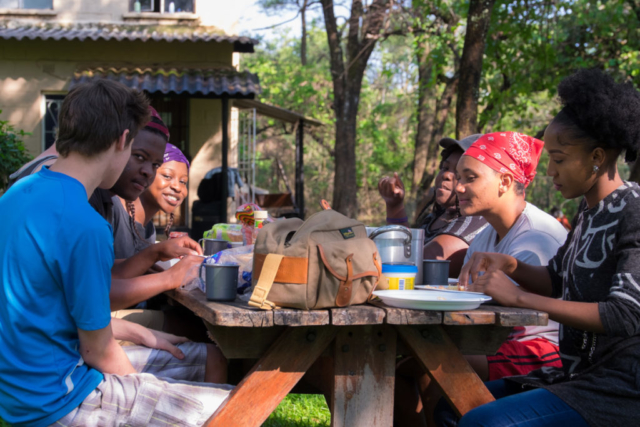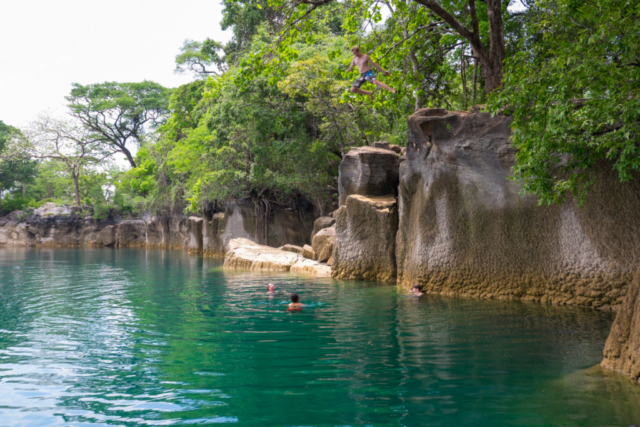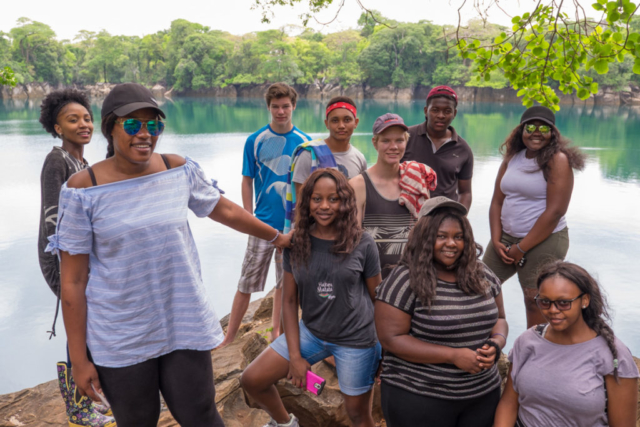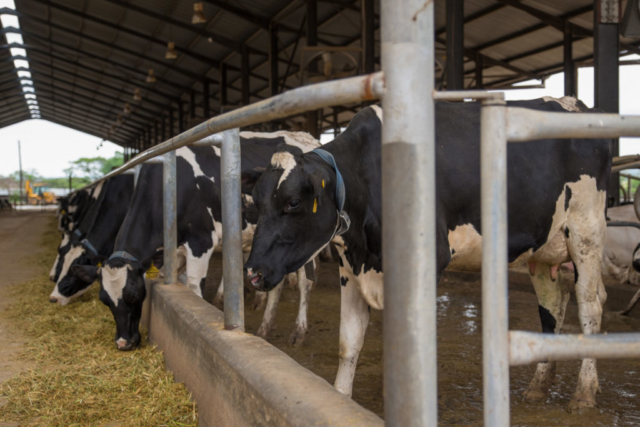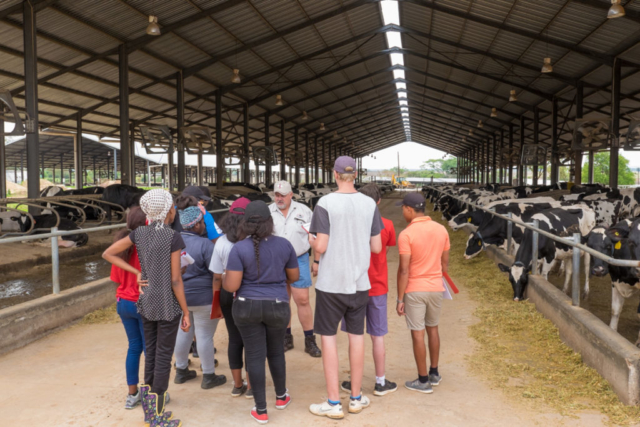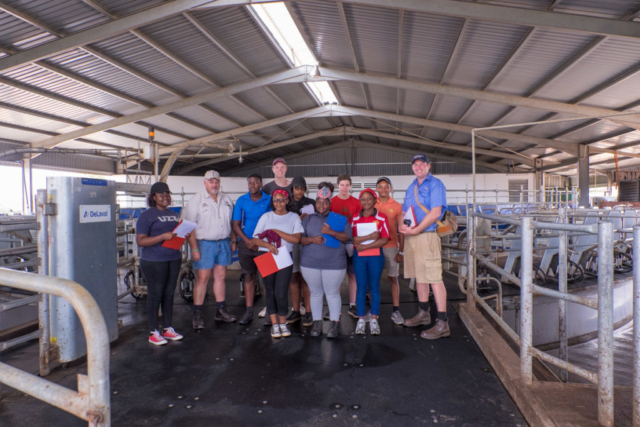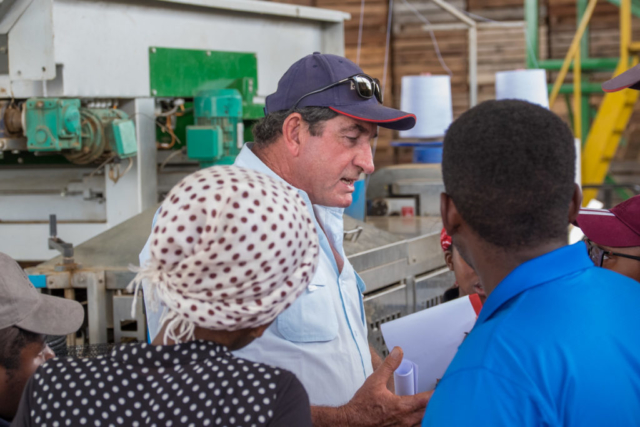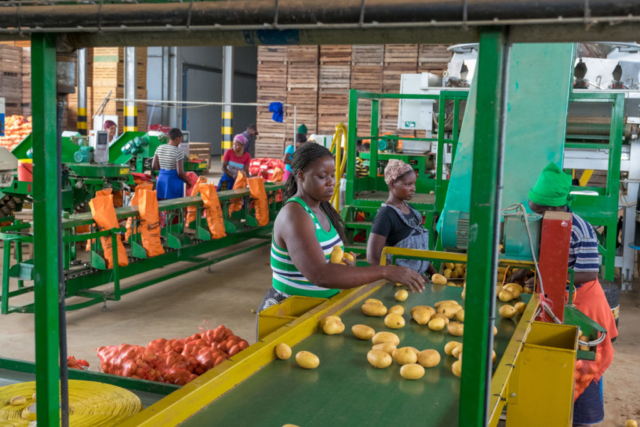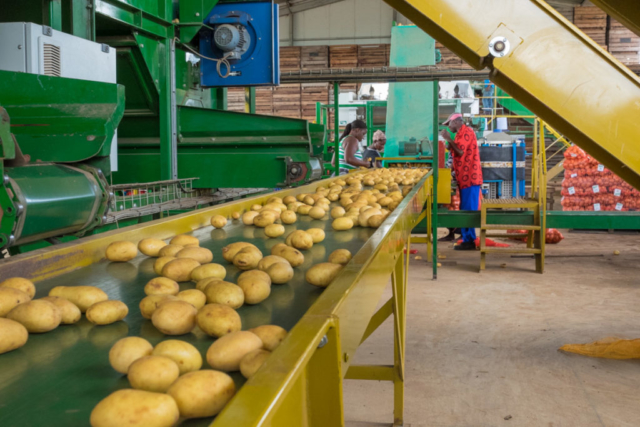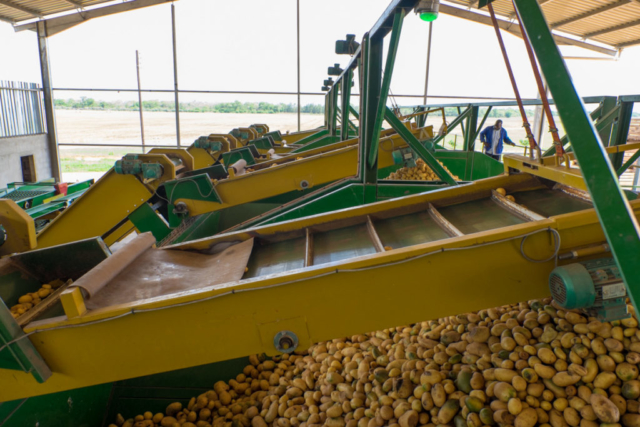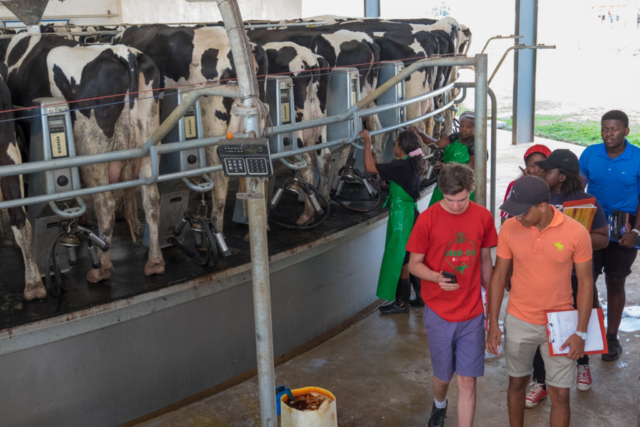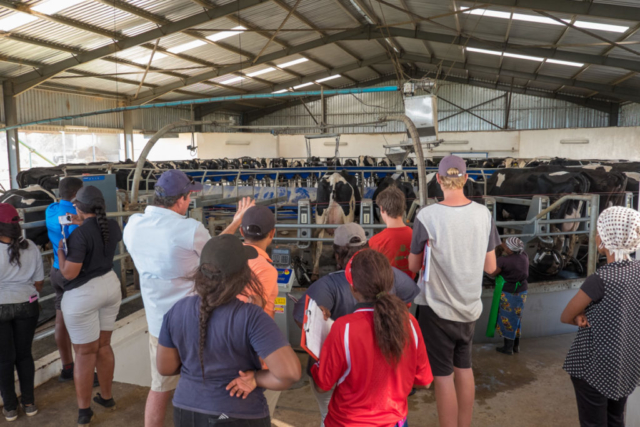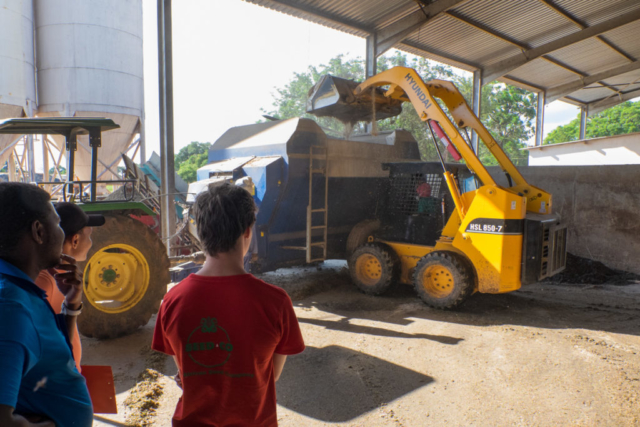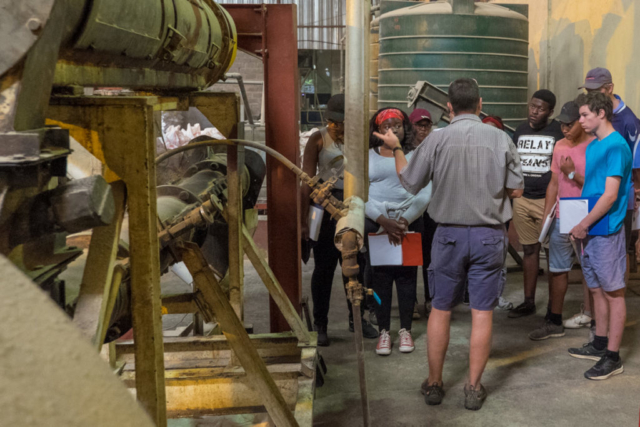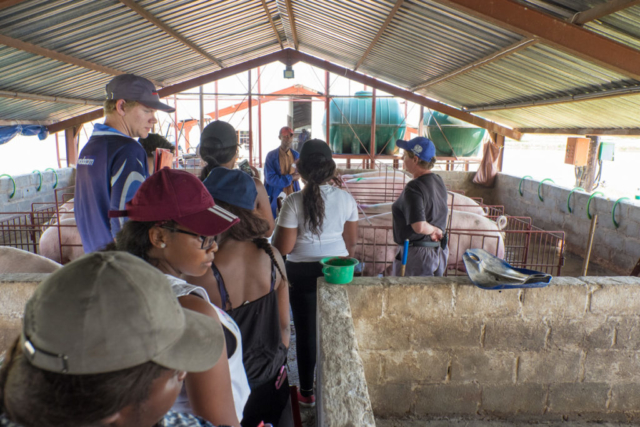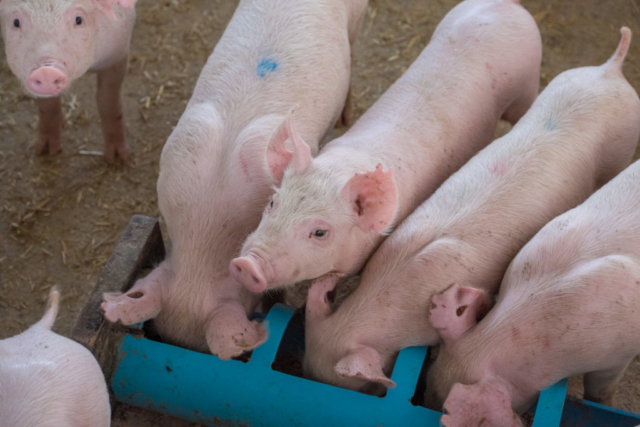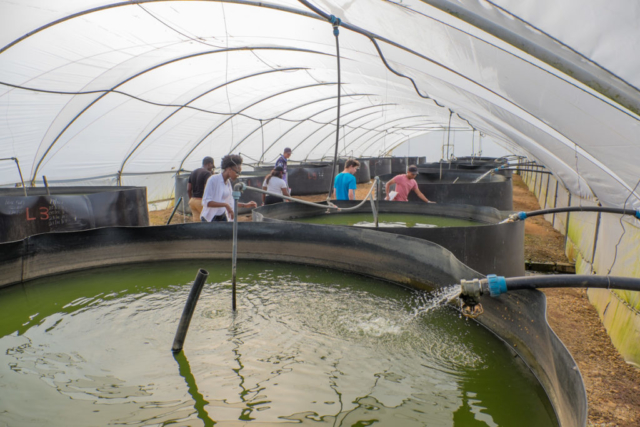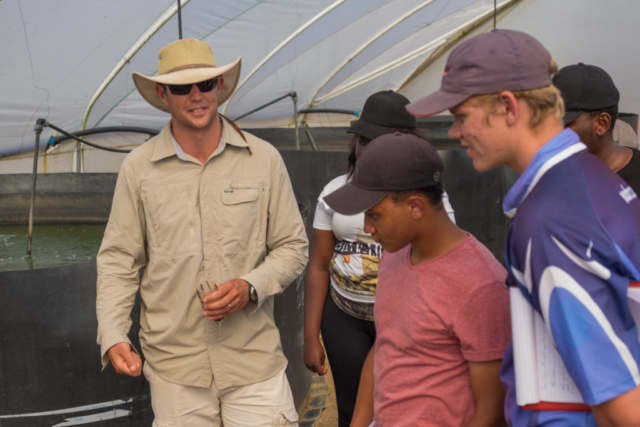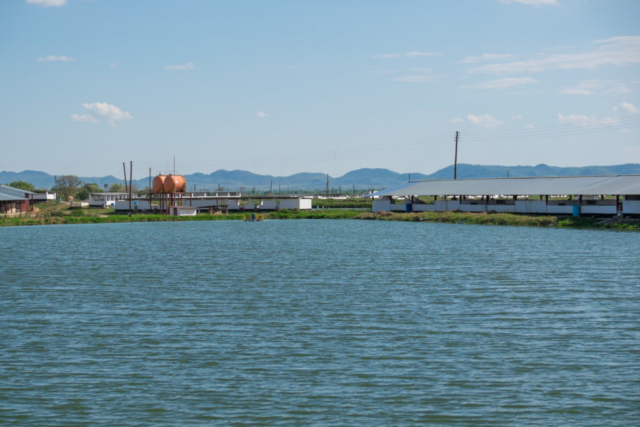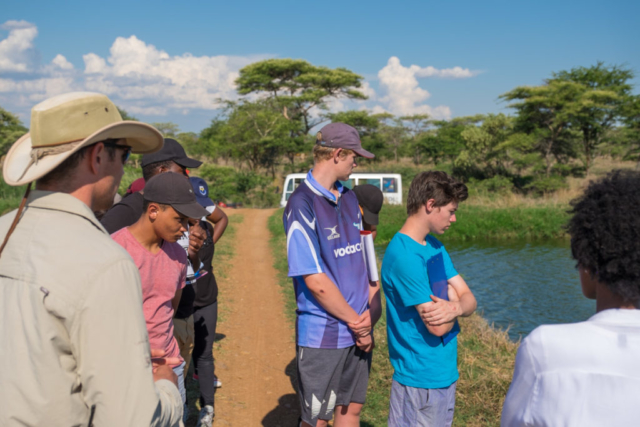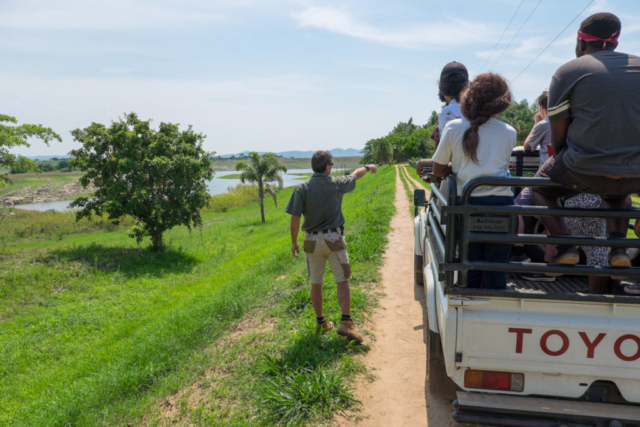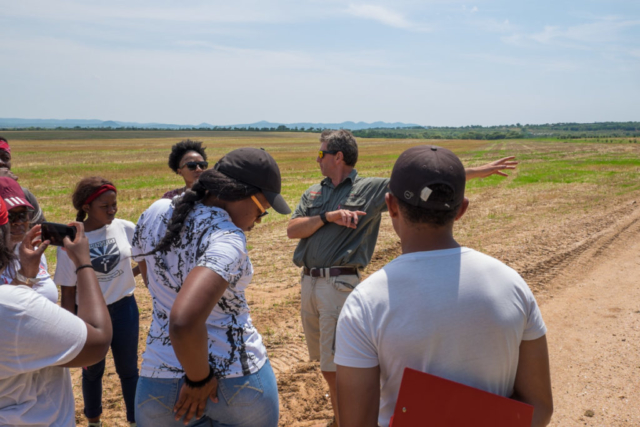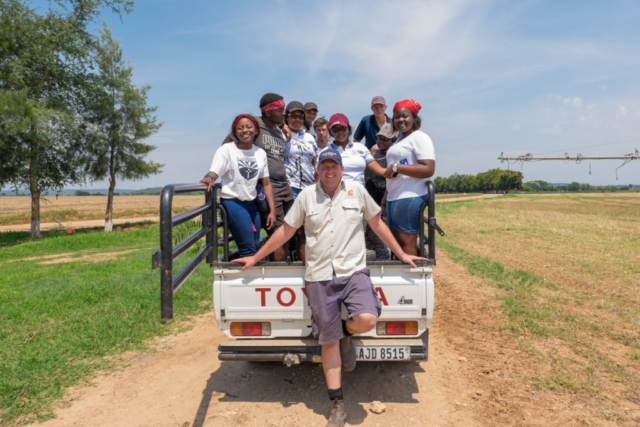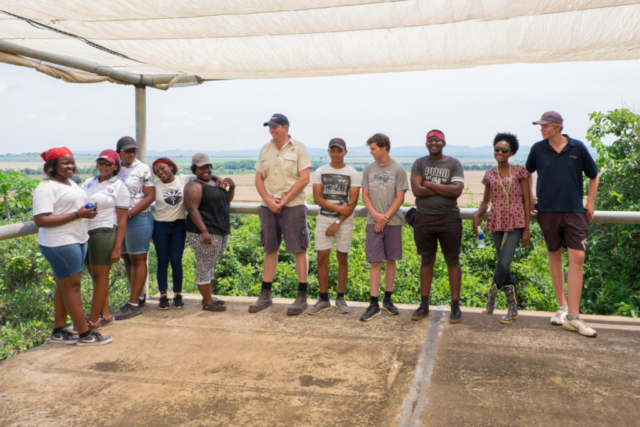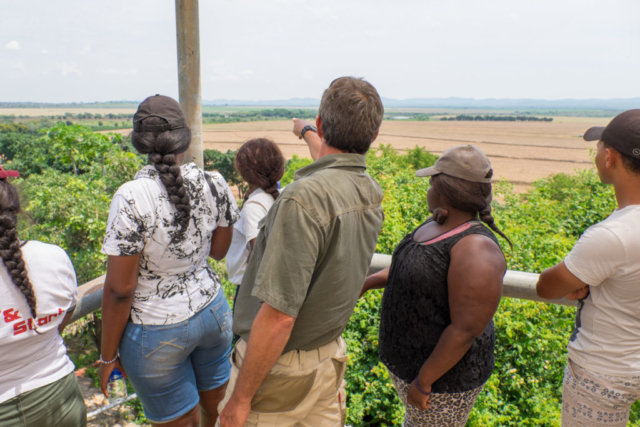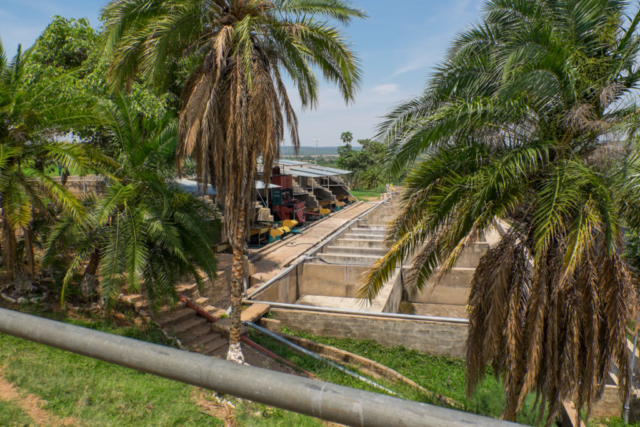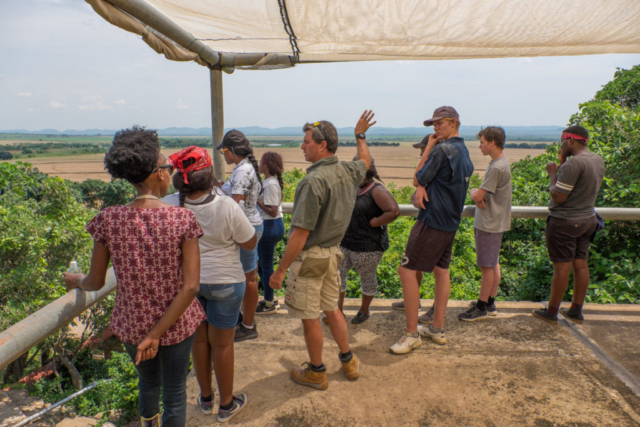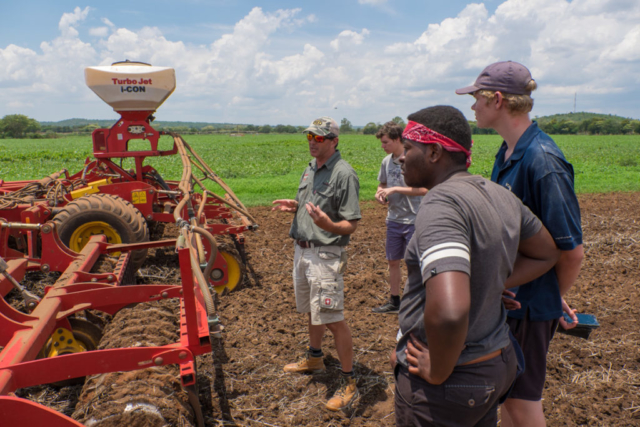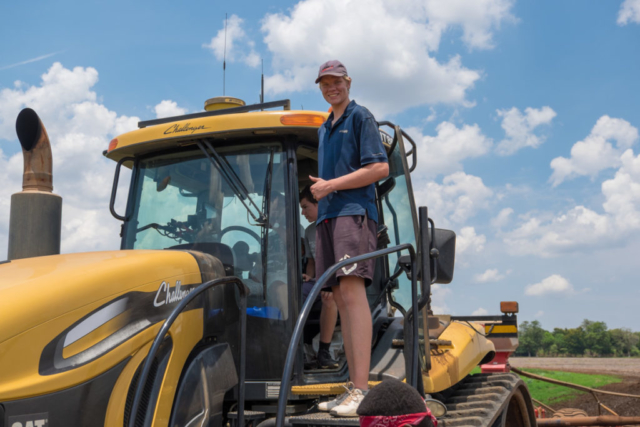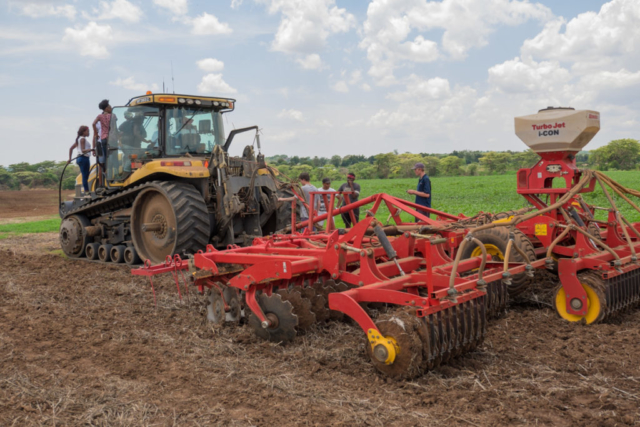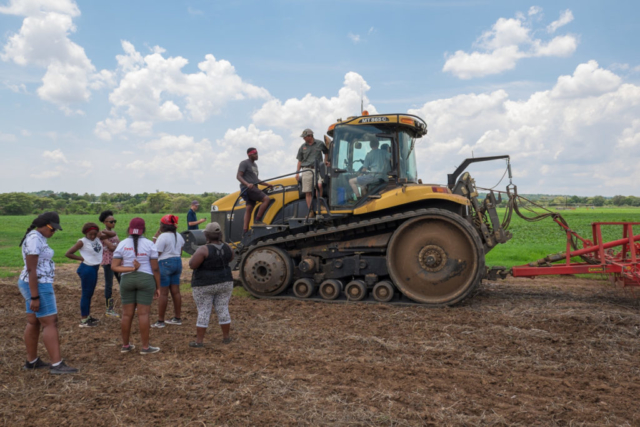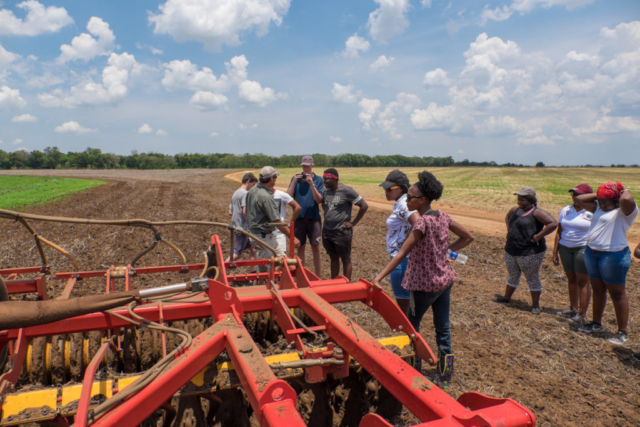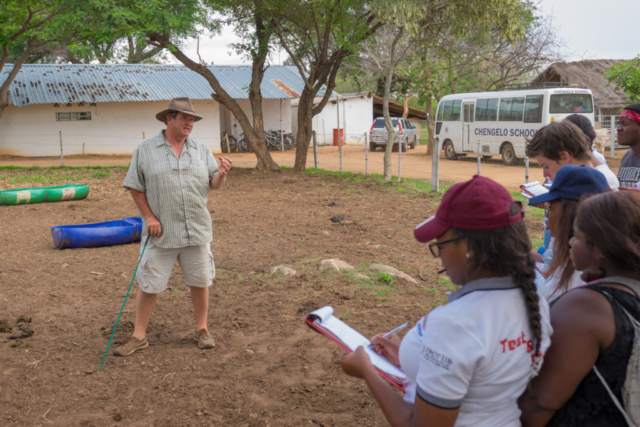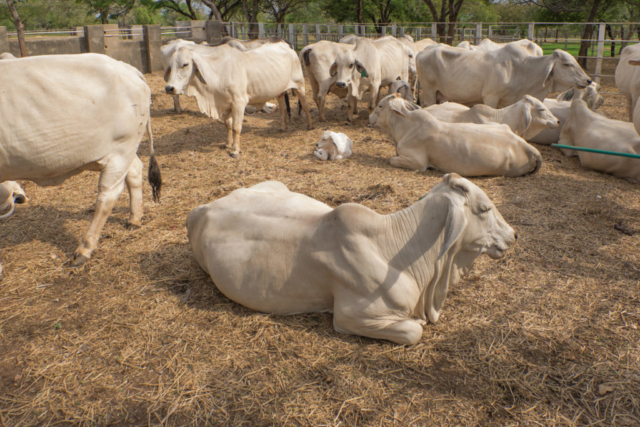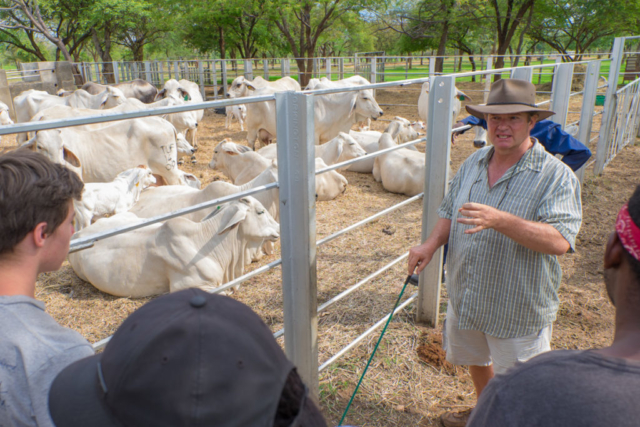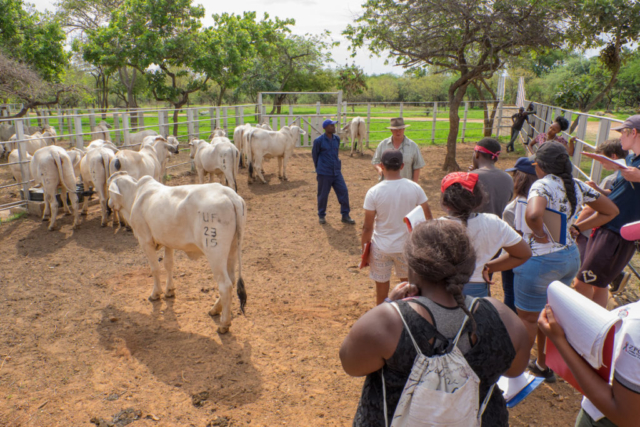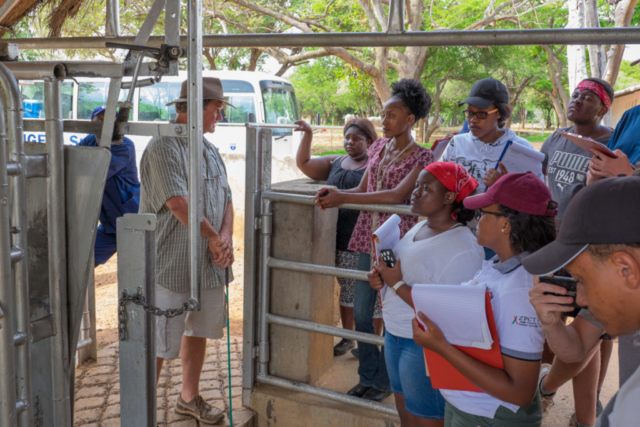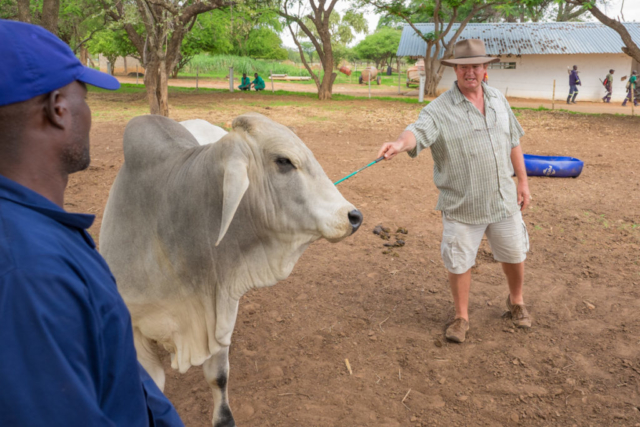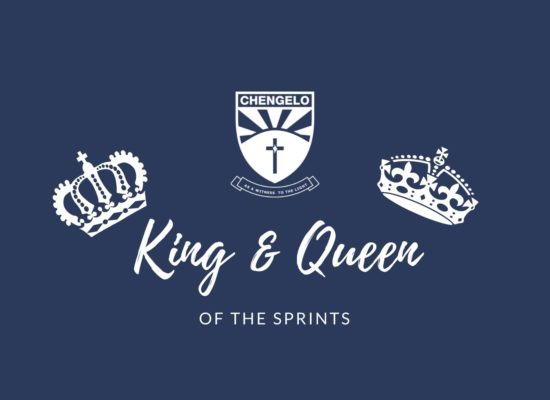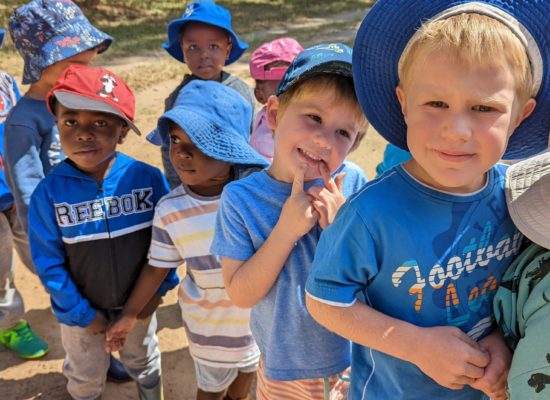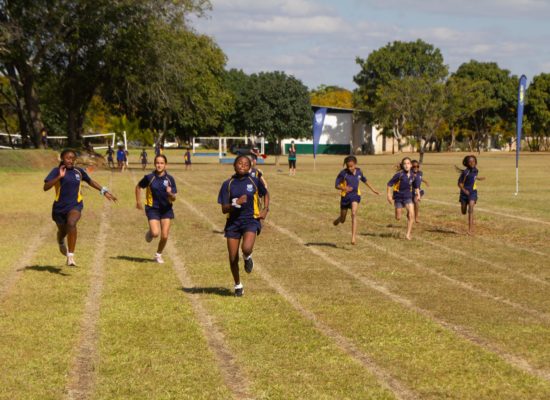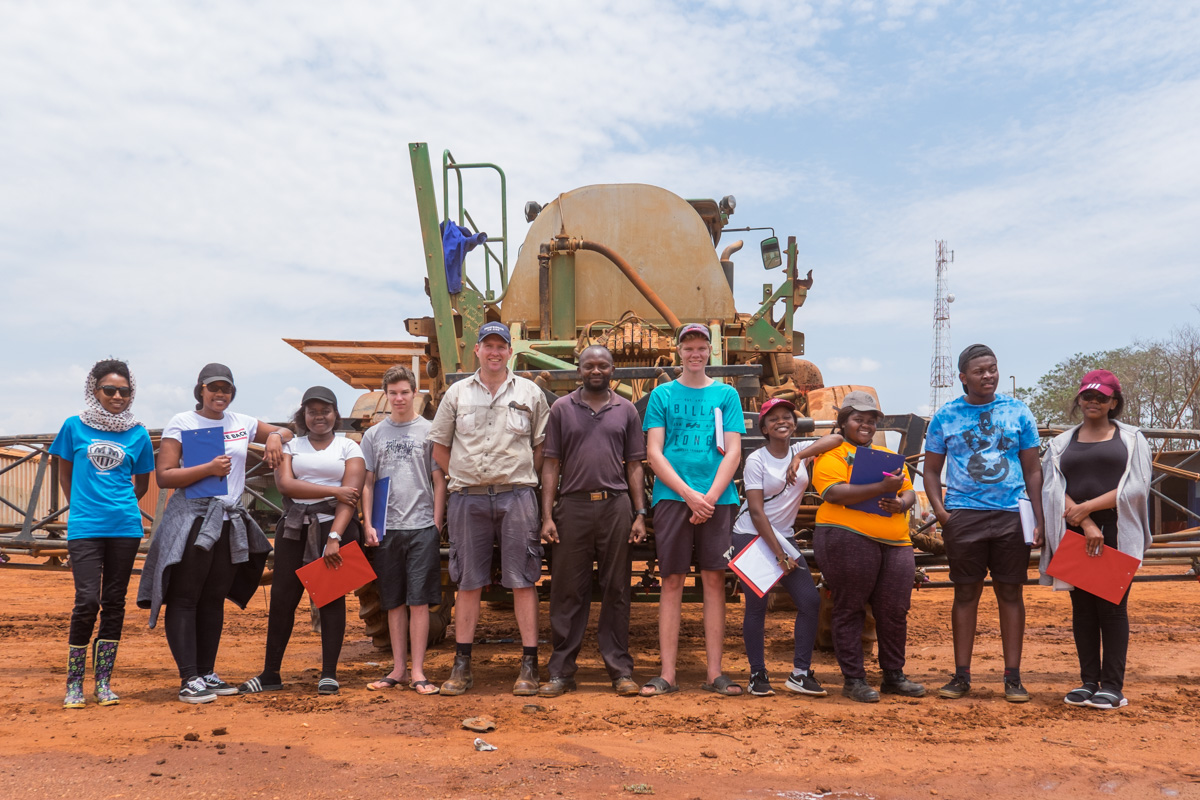
BTEC Diploma in Agriculture Study Tour
At the end of Term 3 a group of nine intrepid BTEC Agriculture students set out on an epic study tour across Zambia, travelling over 1,300km in the space of six days, visiting eight agribusinesses in five different parts of Zambia!
On their trip they saw huge corporate farms with scores of tractors and combines. They visited the Sunken Lake, jumping in from a five-metre cliff. They learnt about the science and technology behind animal nutrition. They saw 100 hectares of fish ponds. They witnessed the artificial insemination of pigs with the best genetics available in the world. They saw a 510 horsepower monster of a tractor, complete with tank-like tracks. This is only a small taster of what the students experienced, carry on reading to find out more!
Zambeef, Mpongwe
Zambeef was kind enough to host our students for our first visit of the study tour. On arrival at the workshop the students were taken aback by the size and scale of the cropping operation here. The farm plants thousands of hectares of wheat, soya and maize, much of it going into Zambeef’s feed company and flour mill. The farm has over ten combine harvesters and about the same number of self-propelled sprayers.
One of the key lessons learnt by the students was the importance of maintenance and repair. During harvest it is critical that the machines are kept running, so that the crop can be brought in as quickly as possible, whilst maintaining quality.
After a quick stop for lunch the tour continued at the Zambeef silos. The students were shown how quality is measured in soya beans, wheat and maize, and the process of filling and offloading the gigantic 2,000 ton silos.
Next, we went out to one of the centre pivots, where five large tractors were planting soya beans in beautifully straight lines. Each tractor can plant up to 60 hectares of soya beans per day, and the tractors work flat-out to get the soya beans planted in good time to maximise yield.
Finally, we were privileged to meet Mr Mike Lovett, who has recently been promoted to take over from Mr Francis Grogan as head of Zambeef. Mr Lovett is an expert in agribusiness, with many years’ experience in the company, and gave students wonderful insights into the financial and operational side of large-scale agriculture. When asked to give advice to our young agriculture students, he warned students to be careful when borrowing money. He said a lot of farmers get into problems when they borrow too much money, so they should be careful when taking out loans and borrow sensibly. We hope that they will take on board this advice in their future careers.
Middle Rigg Farm, Mpongwe
Middle Rigg Farm is a 600 hectare farm, adjacent to Zambeef, which is leased by Rob and Sue Archibald. In contrast to the large corporate setup at Zambeef, Mr Archibald has a much smaller farm on which he achieves outstanding yields, maximising efficiency and the resources available to him. Unfortunately, there was heavy rain that afternoon, so the students were forced to eat two large cakes and drink tea under the veranda while the storm passed! Even though we couldn’t look around the farm, the students gleaned a lot of information from Mr Archibald and were encouraged that profitable farming doesn’t need to be big and corporate, but can be achieved on a much smaller scale, through efficiency and high standards.
Lake Kashiba (Sunken Lake), Mpongwe
After a night spent sleeping in a squash court the students arose (slowly!) and made their way to the Lake Kashiba, close to St. Anthony’s Mission. This is one of the most spectacular sights that there is to be seen in the whole of Zambia. This circular lake is relatively small with a beautiful blue colour to the clear water. The water itself is lovely and warm, being fed from huge aquifers which run along this section of the Rift Valley. Daniel led the way in being the first to jump from the five-metre cliff at the edge of the lake. The straight rocky sides of the lake plunge vertically down for hundreds and hundreds of metres, to a depth no one has ever managed to plumb. The boys and Mr North, and eventually Chiku followed Daniel in jumping off the side and it was an amazing experience to plunge into the warm water below. Katebe deserves a mention too as the only girl to jump in, which she did twice in the end!
After this brilliant experience we made our way to Chisamba where we stayed at Fringilla Lodge, who had kindly given us free camping and reduced rates for staff chalets. As a treat we ate a wonderful evening meal at the restaurant. Unfortunately, the girls let us down here again, failing to finish their meals, but it didn’t help that we had eaten Hungry Lion at 15.00hrs that afternoon! The evening was rounded off with some trampolining and swinging in the playground (not by the staff!).
Kalundu Dairy, Zambeef, Chisamba
Willa Vorster, the manager at Kalundu is a man with a passion for breeding dairy cows, and his enthusiasm was infectious as he showed us around their state of the art facilities. Kalundu milks over 1,000 high-producing Holstein dairy cows, in their new rotary parlour. Here each cow has an electronic tag and a pedometer around it’s neck. This allows the movement of the cow to be recorded to check for problems and to know when she is coming on heat. When the cow comes into the parlour her number is recorded and everything about the cow is kept on the computer. All of her milk production is recorded, along with details of her offspring and any treatments or vaccinations that she may have had.
The farm as a whole is very clean and tidy and the cows are in excellent condition. This is credit to Mr Vorster and his staff, who care a lot about the nutrition and welfare of the animals they are looking after. Students learnt the importance of good nutrition for high milk production and good health, and saw how this can be achieved through using high quality feed and mixing it well.
The calf rearing unit is also very hygienic and the calves are kept in the best conditions possible. This is to make sure that they are able to grow into strong, high producing cows that can produce milk for many years.
Chartonel Estates, Chisamba
After a drinks break, the bus then made its way along the Chisamba road towards the airport and pulled in at Chartonel Estates. Chartonel is a family-run farm on a hugely impressive scale! Mr Stu Cooke is the owner of the farm, and has been developing it since the 1980’s. It is a mixed farm with 200 hectares of potatoes and grows maize, wheat, soya. It also has an impressive 550 cow dairy with a rotary parlour. Students were impressed with the size of the operation here, and that it is run by one man as opposed to being part of a big company. We rode around on the back of Mr Cooke’s pickup, visiting the dairy and looking at the potato harvesting and maize planting, which will be ensiled as feed for the dairy cows. What impressed us here was the size of operation that can be developed over time and the way Mr Cooke has adapted his operation to meet the demands of the market, whether this be for potatoes, milk or row crops.
After a long but informative day of visits we were kindly hosted by Rhys and Becky Williams on the farm they manage in Lusaka, close to the airport. The farm has Santa Gertrudis cattle as well as a growing flock of goats. Here we were well fed and looked after and were able to prepare ourselves for the next day.
Nutri Feeds, Lusaka
Nutri Feeds is one of the leading suppliers of livestock feed in Zambia. We were honoured to have Manager and Animal Nutritionist Steve Kyriazis show us around. As livestock farmers it is vital to get the best performance from our animals, and the students learnt a lot about the science behind animal nutrition and how feed is manufactured. They came away from this trip with a better understanding of how the nutritional requirements of animals can be met in a practical way.
Nutri Feeds have high tech equipment which uses light from the electromagnetic spectrum to analyse maize, wheat and soya beans, to determine their nutrient make up. Miss Pearce, as a physics teacher, was extremely impressed with how physics is used in animal nutrition and this visit was one of the highlights of the tour for her.
After this enlightening visit students were released at East Park Mall for some free time. Here, everything which we had learnt about nutrition was ignored, and students consumed vast quantities of icecream, chips and fried chicken! Next year I believe we could be sponsored by Hungry Lion due to the amount we consumed on this tour!
Kafue Fisheries, Kafue
The visit to Kafue Fisheries took us back to Chipo’s homeland! Just down the road from her village are the impressive, integrated fish and pig enterprises of Kafue Fisheries. This system is very clever in that it utilises waste manure from the pigs to feed the plankton and fertilise the fish ponds, which provide a supplement to the fish’s diet.
The pig unit is very clean and efficient and uses the latest genetics available from all around the world. Students had the rare opportunity to see artificial insemination being carried out on the pigs, which means that the offspring of the sows grow fast and produce plenty of piglets. Our host, Mrs Chant, also demonstrated pregnancy diagnosis on the sows and the students were given a chance to listen to the ultrasound machine.
Next, the general manager Mike Fuller took students through the process of producing Tilapia for the ponds. He started with how the fry are hatched and then grown out as fingerlings. It takes 8-11 months to produce a fish of around 500g, and Kafue Fisheries produces thousands of tonnes of fresh tilapia per year. A highlight for students was learning how hormones are used to produce as many male fish as possible, which grow faster than the females and don’t waste energy reproducing.
That evening we stayed at Chita Lodge in Kafue, which has a beautiful swimming pool and restaurant area. The students were once again forced to swim, relax and enjoy good food and football on the TV. This was our first outdoor camping experience on the tour. Unfortunately, Mr North’s tent door did not close properly and he emerged in the morning covered in hundreds of bites! At least it did provide some laughs for the students!
Mubuyu Farm, Mazabuka
The final leg of our tour saw us head down to Mazabuka and Mubuyu Farm which is the home of Munali Coffee. Munali coffee is one of Zambia’s best quality coffees and is exported all over the world. Coffee is by no means all that Mubuyu Farm produces; they have a flour mill under the Nyati Milling brand and a large area of row crops under irrigation. This highly innovative farm uses the latest precision farming techniques and their equipment is state of the art. The boys could hardly contain their excitement at the sight of a huge 510 horsepower tracked Caterpillar Challenger tractor at work in the field, and our students had the opportunity to sit inside its tech-filled cab.
One of the highlights of this visit was seeing the application of precision farming techniques, including GPS mapping, in modern farming. The farm was undertaking a project to build many kilometres of drains on the farm, to better harness rainwater for irrigation. The drains were mapped by satellite and the slope and path of the drain was measured with an accuracy of ±2.5cm with the farm’s RTK GPS system.
The visit to Mubuyu Farm ended in a very civilised way, as we were invited into the house of Mr Lublinkhof, who is part of the family that established and run the farm. Here we were treated to Munali coffee and rolls made with fresh flour from the farm’s mill. This was typical of the warm and hospitable welcome we received from all the farms and businesses we visited on the tour.
Tanderra Brahman Stud, Mazabuka
The study tour finished on a high as we went to look at Mr Chucky Cantlay’s impressive Brahman stud just outside of Mazabuka. Arriving on the farm you are struck by how ordered, neat and well-built the buildings and handling facilities are. This reflects the care and detail that Mr Cantlay has put into building up his wonderful herd of pedigree Brahmans.
We had the privilege of being shown around by Mr Neville Pinkney, who is one of Zambia’s top livestock breeders. Mr Pinkney was highly engaging with the students and talked them through the merits of the Brahman breed as an excellent maternal breed for Zambia, and also spoke about the process of breeding and selecting top quality bulls and cows.
Studying the bulls and standing among them in their pen showed the students how docile Brahmans can be if well-handled from a young age. These large bulls were friendly, if not inquisitive, which kept the students alert and huddled close to Mr North for protection!
Once again we were shown generous hospitality by Mr Pinkney and Mr Cantlay, finishing the tour off by drinking tea and eating cake, overlooking a beautiful view of the Mazabuka Farm Block.
We spent the night at the Mazabuka Turf Club before making the long journey back to Mkushi the following day. The students were tired but in good spirits and each one thoroughly enjoyed the tour and learnt a lot during it. I believe for many of them it was the highlight of the year on the course and the boys have even planned where they want to go on next year’s tour!
On behalf of the BTEC in Agriculture students and Chengelo School I would like to thank all of the many people who helped make the tour such a resounding success. Our thanks extend to the farmers and business owners who allowed us to visit, the people who accommodated us overnight, Mr Joas our driver, Miss Pearce for accompanying us and the kitchen staff at Chengelo who provided us with food.
We hope this will be the start of an annual agricultural study tour as there is so much happening in the agricultural sector for the students to see and learn from.
Text & Photographs: Mr. David North

